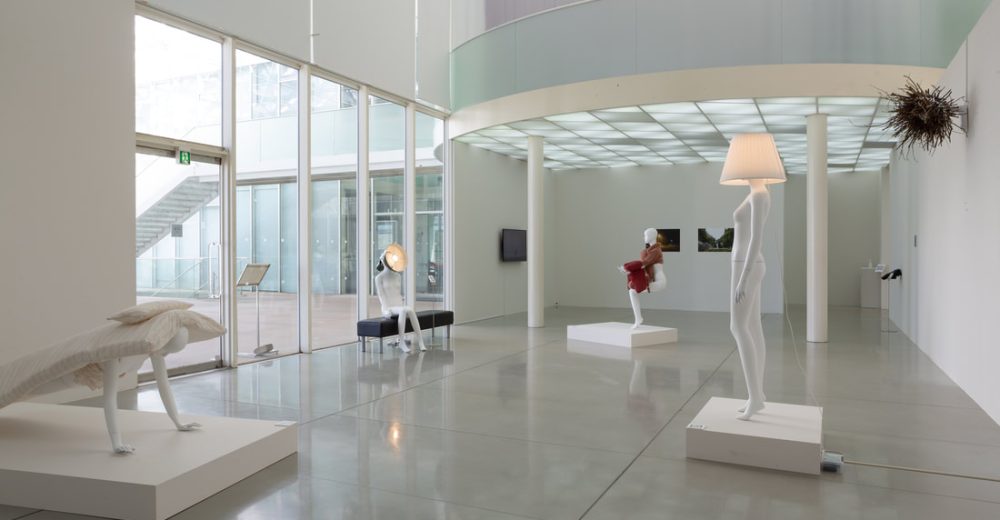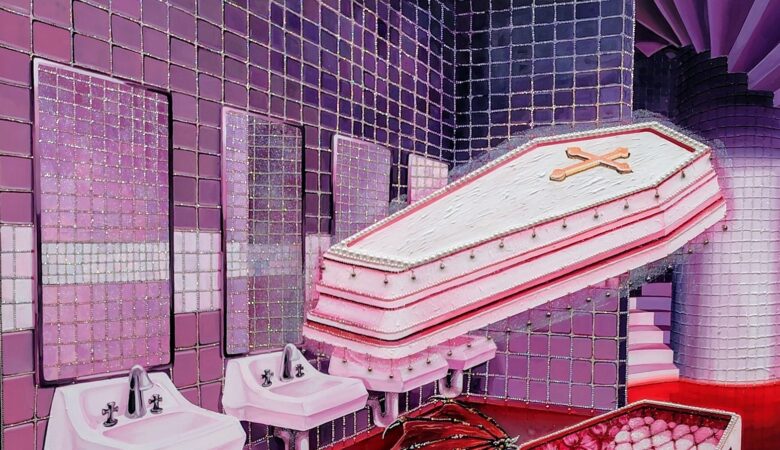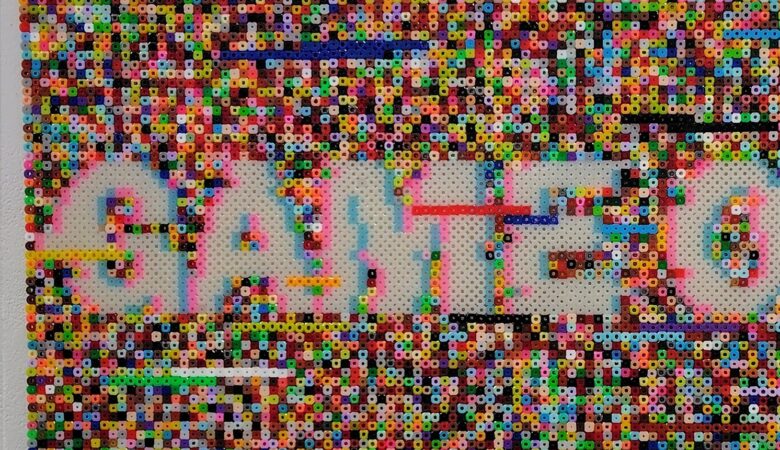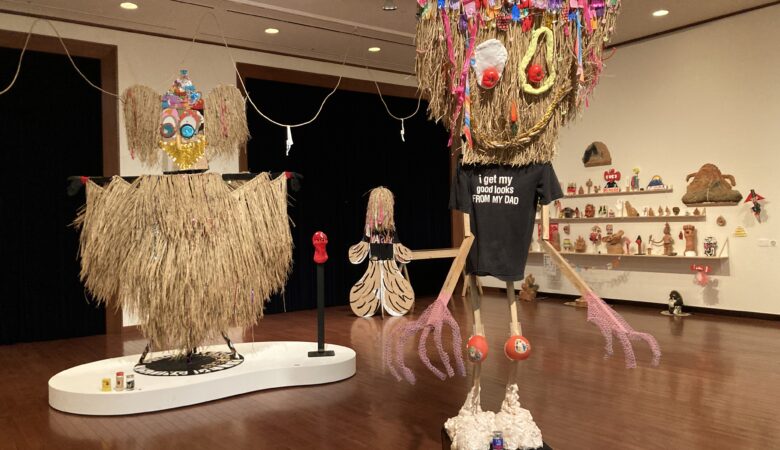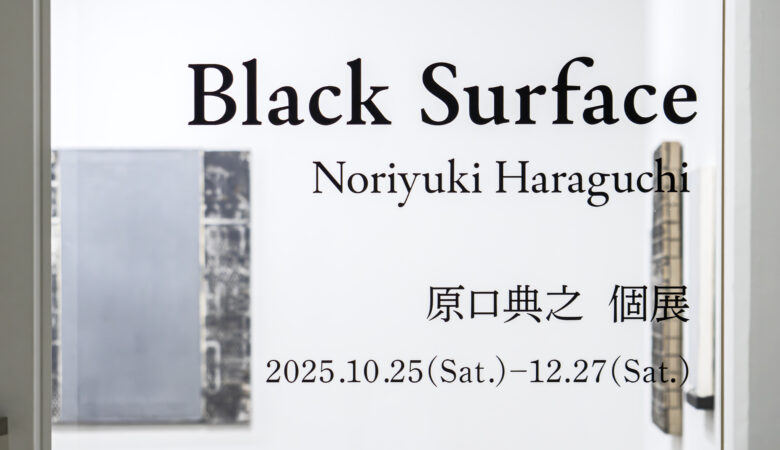Huang Xuan Exhibition――Around aground
Public Creation: 2023/9/16 – 2023/9/29
Exhibition: 2023/9/30 – 2023/12/3
Live Performance: 2023/9/30, 10/1, 10/7, 10/8, 10/9
Venue: Kirishima Open-Air-Museum (Art Hall) Exhibition Lobby
Tomoki Akimaru (Curator of Kirishima Open-Air-Museum)
Since 2017, Kirishima Open-Air Museum in Kagoshima in Japan has been running an “Asian Artist Invitation Project” that invites young Asian artists and holds solo exhibitions as part of the “Kirishima Lobby Project.” In 2023, after the covid-19 pandemic, as the 4th project we invited Huang Xuan from Taiwan to hold a public creation, exhibition, and performance.
Huang is a 28-year-old artist born in 1995 in Taipei, Taiwan. She completed her MFA at National Taiwan University of Arts in 2021 and currently lives and works based in Taipei. This exhibition featured works created by Huang in Taiwan and newly produced works in Japan. Both are a total of 10 works, five each, and they are all new works made after 2019.

Fig. 1 Huang Xuan Classic Red Armrest Sofa 2019
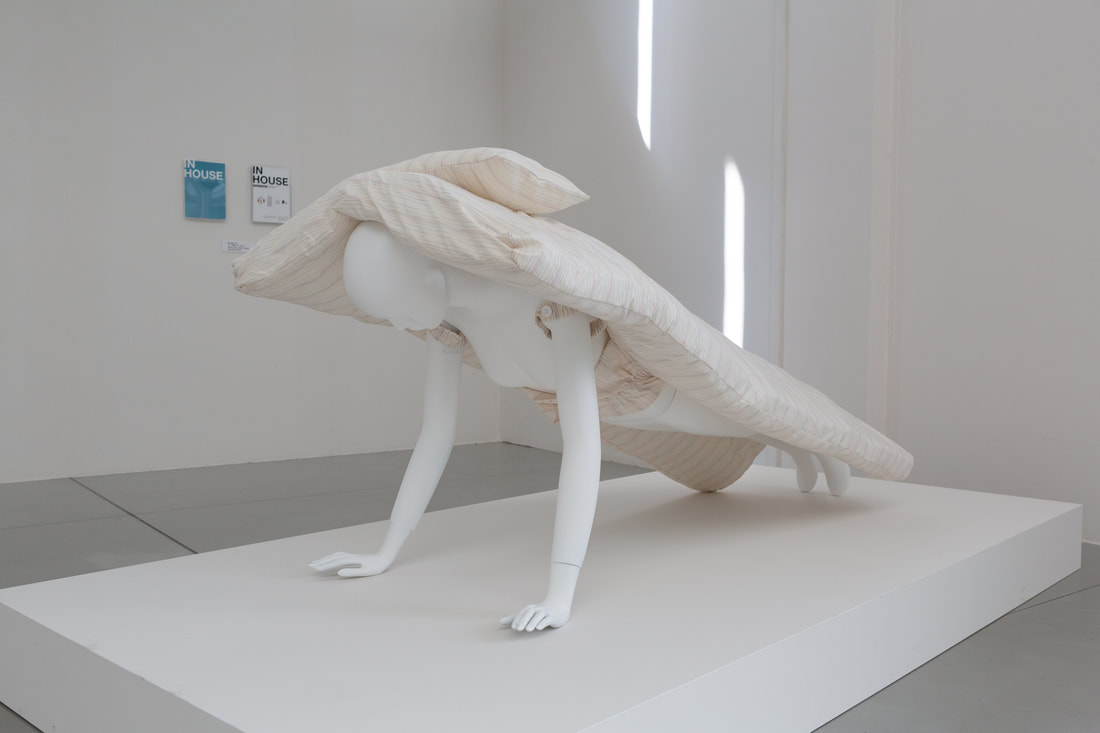
Fig. 2 Huang Xuan Pinstripe Mattress on White 2020
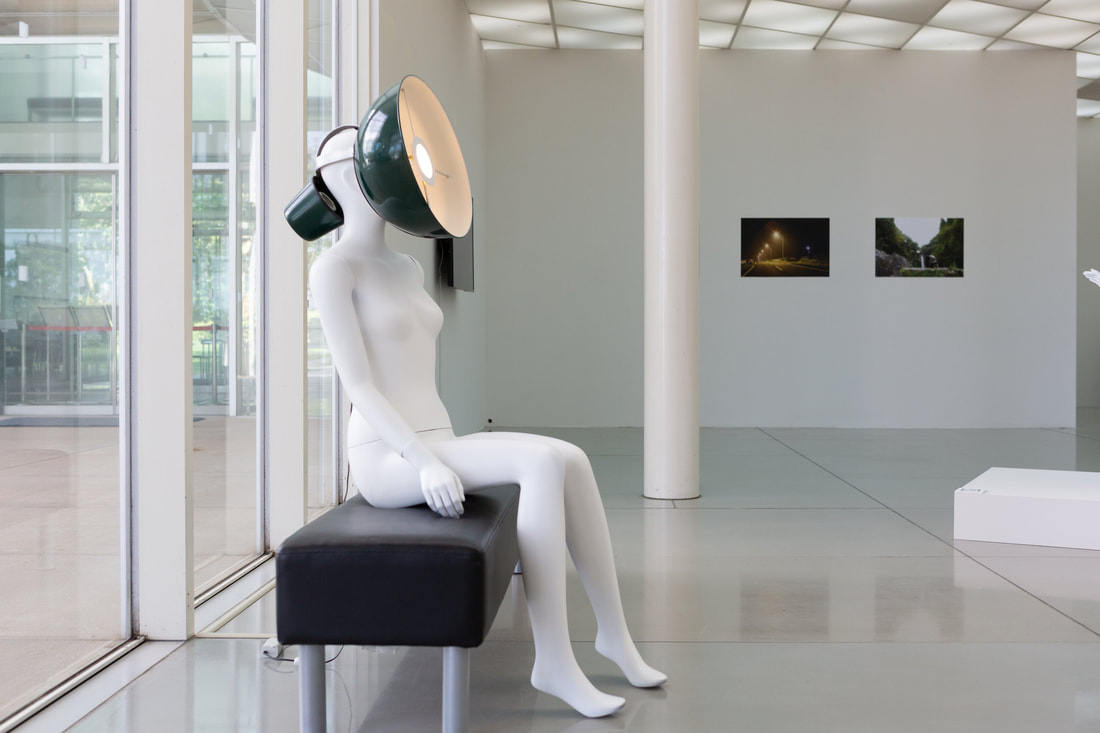
Fig. 3 Huang Xuan Dark Green Table Lamp 2021
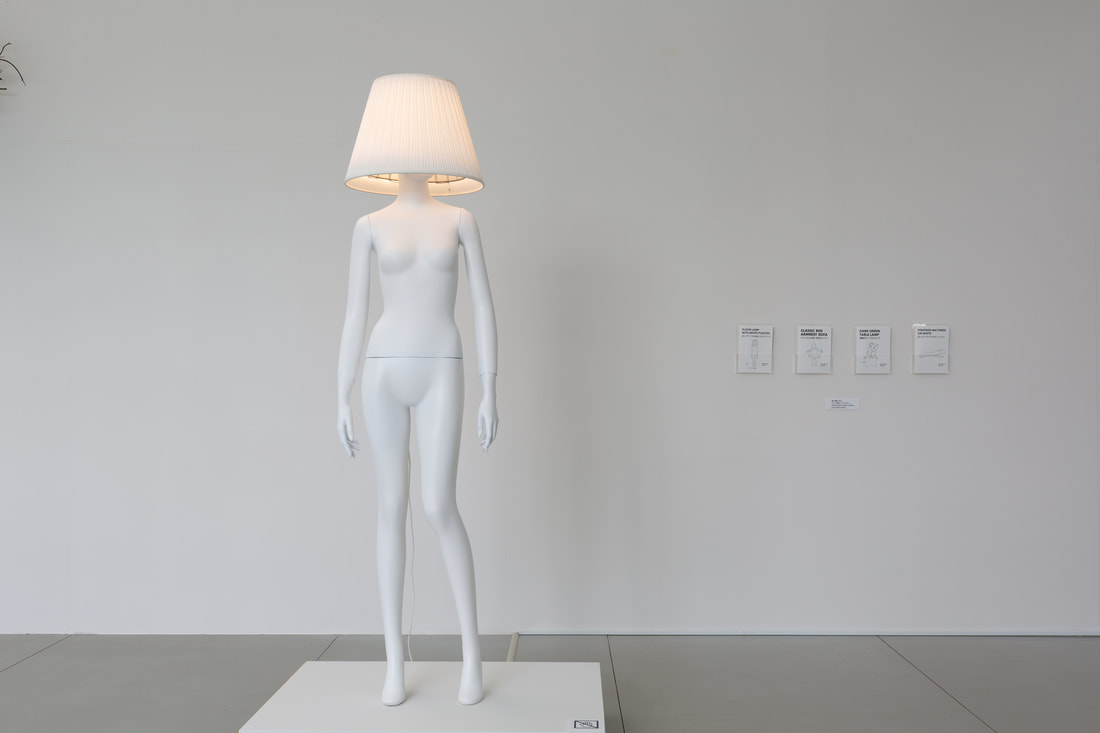
Fig. 4 Huang Xuan Floor Lamp with White Pleated 2021
“In-House” Series
Fiber, iron, steel, painting, LED lights, FRP, paper, ink, video
Dimension variable
In Taiwan, Huang created the “In-House” series of costume works, Classic Red Armrest Sofa (Fig. 1), Pinstripe Mattress on White (Fig. 2), Dark Green Table Lamp (Fig. 3), Floor Lamp with White Pleated (Fig. 4), and the video work Waves (Fig. 5). The “In-House” series won the Excellence Award at the 2021 Taipei Art Awards. The exhibition also featured the artist’s own instruction manual introducing the “In-House” series and a video of a performance in which the artist actually wearing them.
Regarding her creation in Japan, Huang came to Japan on September 8, 2023, arrived in Kagoshima, and stayed at Kurinodake Art Field in the Kirishima Mountains. Since then, Huang held meetings for exhibition every day at Kirishima Open-Air Museum, and also visited various scenic spots in Kagoshima: Yunohira Observatory overlooking Mt. Sakurajima, Kinkowan National Park, Sogi Falls, Inukai Fall, Maruo Fall, Maruike Spring and other places around the Kirishima Mountains. Based on the ideas that inspired during the research trip, she created the photographic works Black Inukai Fall (Fig. 6), Kurino Bridge+1 (Fig. 7), and Daily Foggy (Fig. 8), and the three-dimensional works With the wind (Fig. 9) and A Small Part of Kirishima (Fig. 10).
The public creation took place for two weeks from September 16 to 29, in a temporary studio set up in the exhibition lobby of the museum where the exhibition was to be held. At first, Huang seemed a little nervous and confused because this was her first solo exhibition in Japan, an unknown land, and her work in progress was seen by others. However, with her intelligence and sincerity, Huang gradually became familiar with her surroundings, and preparations for the exhibition proceeded steadily. Huang is fluent in English and has been communicating well with the museum. During the public creation, she was often asked questions by curious visitors, to which she responded in kind, and her attitude was impressive as she tried to carefully explain the intent of her own works one by one despite his language barrier.
The exhibition was held in the museum’s exhibition lobby for about two months, from September 30 to December 3. The final decision on the display placement of the works was made by Huang with the museum’s advice. The works were arranged in a well-balanced manner throughout the space, and the lighting and flow lines were well thought out, so that although the number of works was not large, the content was dense. In fact, the response from the audience was positive, and everyone was smiling, especially children, who often ran around the works and striking the same poses as the mannequins.[i]
Moreover, the fact that the exhibition space seemed to be unified by a single theme was largely due to Huang’s temperament as an artist. At first glance, Huang’s style is very funny and friendly, and her works are so humorous that everyone can’t help but chuckle at them. However, it is not only amusing, but if you look closely, you will find that there is an underlying intellectual contemplation. In other words, Huang’s interest lies in various “boundaries,” especially in the “relationship between humans and nature,” and the consistent feature of her work is that she tries to reveal, through repetitive and futile actions, relationships between self and others and the nature of each, that we have overlooked as self-evident.
The subtitle of this exhibition derives from this. “Around aground” is a rhyming poetic phrase chosen by Huang herself, which can be translated as “stranded here and there.” The reason why it’s “stranded here and there” is that the 10 works in this exhibition are all based on familiar objects, but all of them are out of sync with the normal way of being and using them. This intentional displacement, or intentional “aground,” overturns our usual way of looking at things and sheds new light on things that we take for granted and have lost sight of in our daily lives. To bring about new insights and discoveries through this process is the core of Huang’s artistic activities.[ii]
◇ ◇ ◇
Let’s take a look at her works.
First, the “In-House” series consists of four works that, as the name suggests, combine furniture and costumes for “indoor” use. In each of these works, the relationship between the human and objects is quite different from the usual one.
Actually, the Classic Red Armrest Sofa (Fig. 1) is designed in such a way that the person does not sit on the sofa, but on the contrary, the sofa sits on the person. Therefore, even if a person tries to sit down to relax, the person will not be able to do so, but will be forced into a painful and dangerous posture just like an “air chair” in a game of punishment.
The Pinstripe Mattress on White (Fig. 2) is also shaped so that the mattress is lying on the person, rather than the person lying on the mattress. As a result, even a person try to sleep to relax, the person cannot do so, and instead are forced to take unstable and difficult positions, such as the “plank” pose in exercise.
In addition, the Dark Green Table Lamp (Fig. 3) is useless as a lighting fixture. This is because lighting fixtures are originally intended to illuminate objects from man’s behind to make them easier to see, but instead this lamp emit light in front of person’s eyes, preventing the person from looking at objects.
Similarly, the Floor Lamp with White Pleated (Fig. 4) is useless as a lighting fixture. This is because in this work, a person’s head is covered by the lighting equipment itself, making it impossible to see anything in front of the person.
In short, in all of these “In-House” series, furniture that should usually be useful has turned out to be completely useless. Nevertheless, each of these useless furniture costume pieces is accompanied by an instruction manual extolling how it will enrich your life. [iii]。
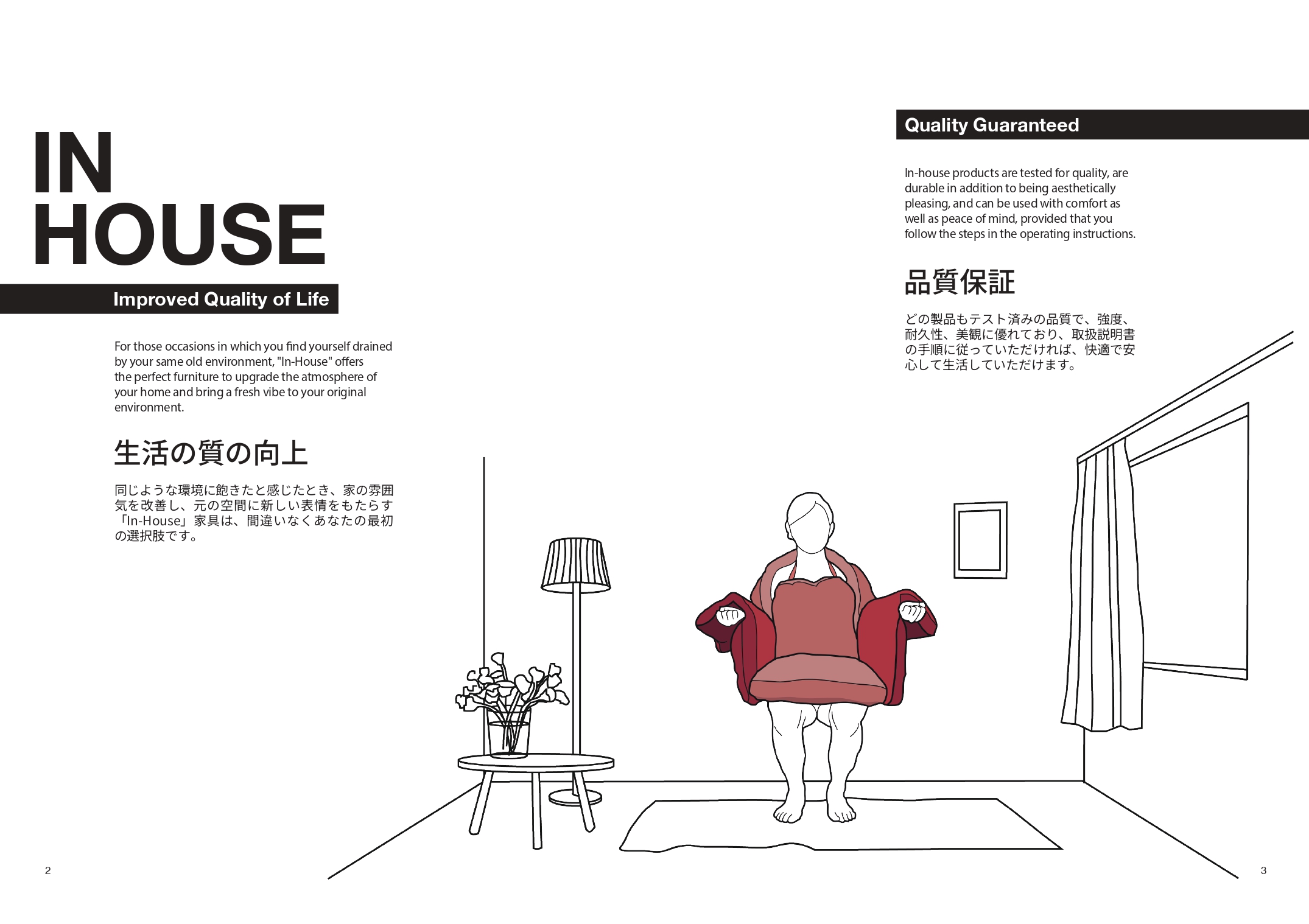
Manual
Also, the very idea of wearing furniture as a costume is nonsense. Nevertheless, each of these impossible furniture costume pieces is fashionably dressed on mannequins as if it were a trendy fashion item.
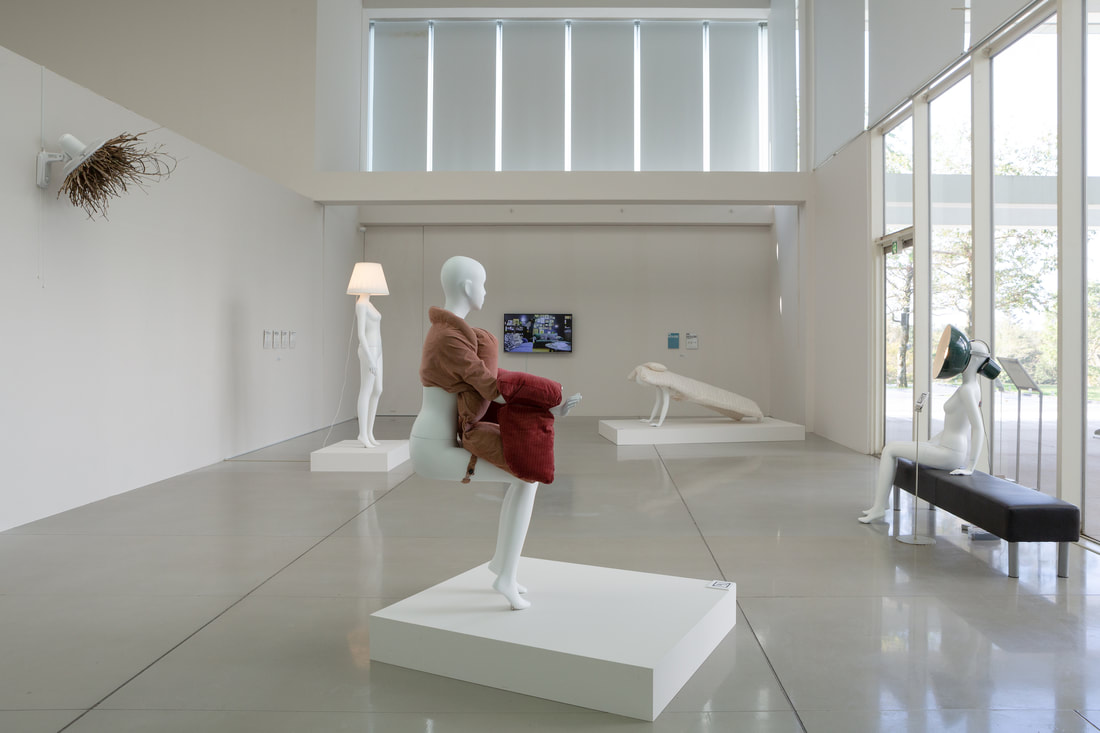
Exhibition view
Moreover, the exhibition includes a video of Huang actually wearing these furniture costumes and performing in a real furniture store. In other words, a multi-layered paradox is represented in which Huang, dressed in each impossible furniture-type costume, performs her artistic activities amidst a display of products that imitate real life.
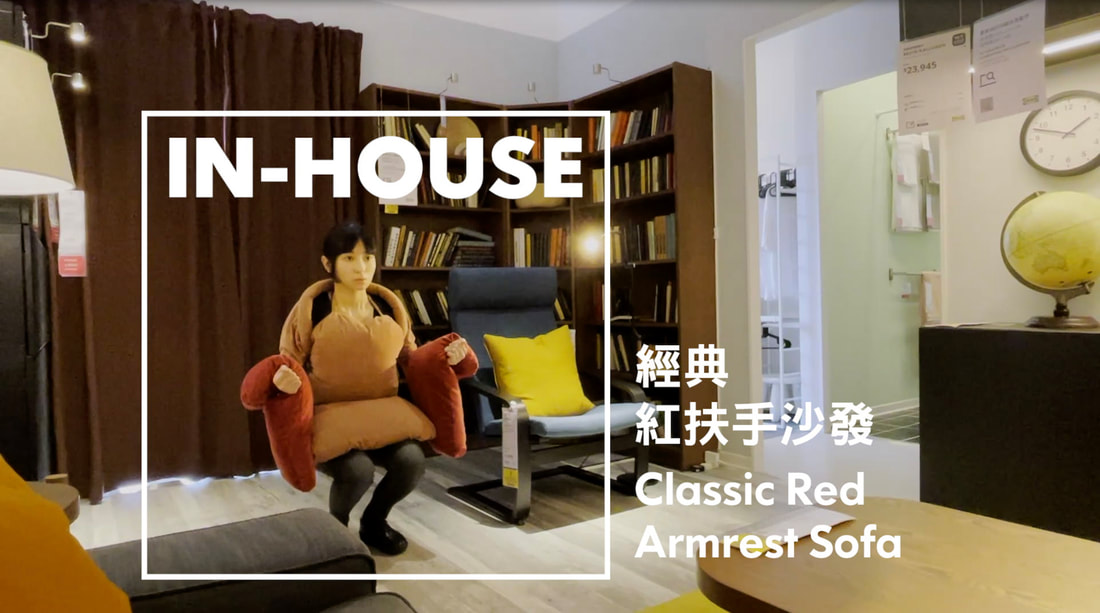
Movie of performance
According to Huang, the idea for these strange pieces of furniture costumes came about after sitting in a chair for long hours at a part-time desk job and feeling as if her body had stiffened and become the chair itself. In other words, what is generally thought to provide comfort can actually cause discomfort. These series of works that expose such a “gentle traps” paradoxically contain the message that humans can live more naturally. Huang’s excellent ingenuity lies in the fact that she deliberately choose familiar everyday items in order to convey this message in a way that is easy for anyone to understand.
Let’s quote Huang’s own words.
The “In-House” series can perhaps be traced back to my previous experience as a part-time worker in an office. because after sitting in a seat for a long time, you will start to feel like a chair in the room. A chair that originally conforms to the shape of your body becomes a chair that you have to obey. Even though sitting in an office is what we usually think of as a more “relaxed” and “comfortable” job, maintaining the same posture has become a kind of physical constraint. Therefore, in this series of works, I have chosen some furniture that gives people a comfortable and warm impression as prototypes (sofa, mattress, lamp), and created a series of clothing that people can wear, but combined them with a more difficult or challenging posture, such as squat and plank. It upside-down the relationship between the objects and the human: support and be supported. I chose comfortable furniture because they often tempt you to spend a lot of time relying on them in your life and home, sitting on them, lying on them, resting on them, or doing other things because they are comfortable and so you are unguardedly immersed in them. “Comfortable”, in some way, I think it would be like “eliminating feelings”. For example, ergonomic furniture often emphasizes that it conforms to the shape of the human body and eliminates discomfort, and that it doesn’t feel sore even after long periods of time; or the shock absorbers on a car absorb the vibrations caused by the uneven surface of the road, making the driving process more stable. Here, comfort is like a smooth curve of feeling, without ups and downs, without fluctuations. Perhaps this comfort is like a gentle trap that turns us into objects to be used in the process. [iv]
◇ ◇ ◇
It is interesting to note here that Huang’s works of art are not only full of fun, but also have a certain poetic sentiment. This is not just because she has a good sense of form, but also because by facing the world more deeply, it makes us strongly perceive the relationship between human and nature. This is the source of the humorous comedy and poetic beauty that can be felt in Huang’s works of art.
Fig. 5 Huang Xuan Waves 2022
Video|16min 30s
For example, in Waves (Fig. 5), Huang stands by the edge of the waves on the beach, picking up stones one by one and throwing them toward the sea. This is the meaning of the title, “wave.” As the stones are eventually washed to return back by the waves, it becomes somewhat comical to watch her repeat such useless actions over and over again. However, the image of her back as she just keeps throwing pebbles toward the horizon, as if in response to the endless lapping waves, is very poetic and beautiful as a picture. There is even a feeling of affirmation that although humans are powerless against nature, they are by no means meaningless [v]。
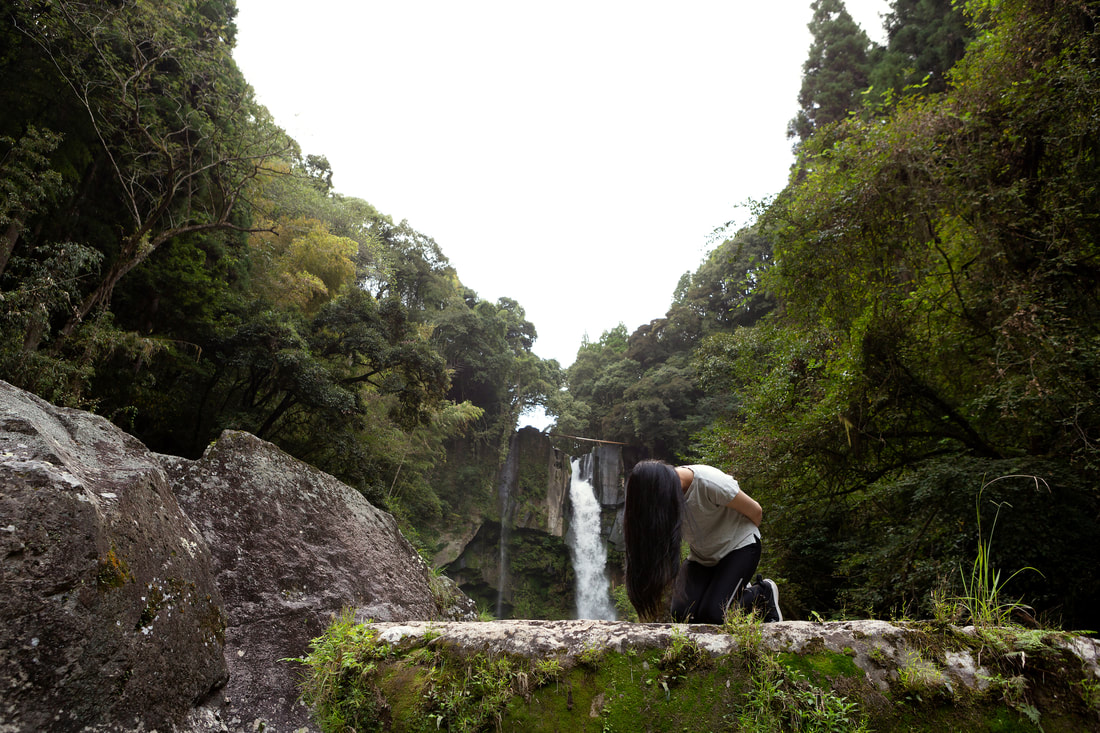
Fig. 6 Huang Xuan The black Inukai waterfall 2023
Photography|75×50 cm
In The black Inukai waterfall (Fig. 6), Huang hangs down her black hair on the ground beside “Inukai Fall” near the Kirishima mountains, just like the water from the waterfall that falls from the cliff behind her. This is the meaning of the title, “The black Inukai Waterfall.” I find myself smiling bitterly as I stare at her for so long as she imitates a waterfall, letting her hair fall in a sincere manner. However, the exquisite contrast of the objects flowing smoothly down is so poetic and beautiful as a picture. It even evokes the mythological associations shared by mankind, which have long compared water to woman. [vi]
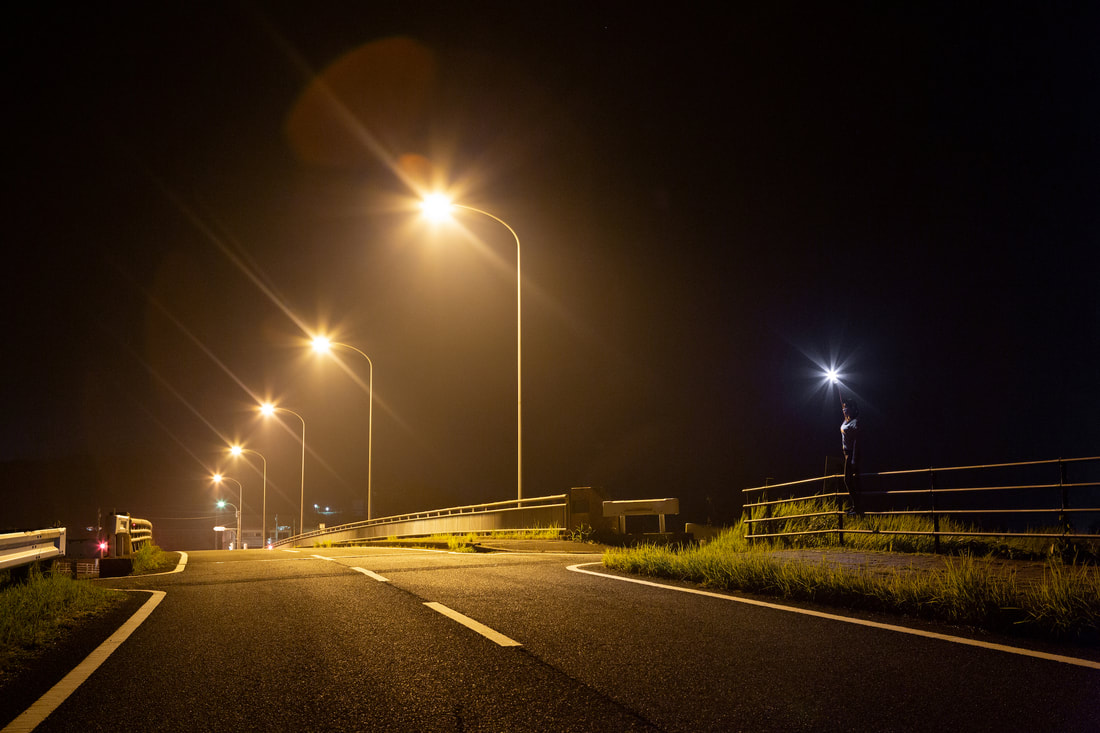
Fig. 7 Huang Xuan Kurino bridge +1 2023
Photography|75×50 cm
Similarly, in Kurino bridge +1 (Fig. 7), Huang stands at the edge of “Kurino Bridge” at the foot of Mt. Kurino in the Kirishima mountains, holding up her mobile phone light high, as if to add one more light to the row of road lights that stand in a row. This is the meaning of the title, “Kurino Bridge +1.” It is somewhat funny to watch her earnestly imitating the road lights for a long time, However, the way she stands there extending the rows of lights that seem to transfer the stars of the night sky to the ground is very poetic and beautiful as a picture. There, we can even see a positive will to illuminate the world as brightly as possible [vii]。
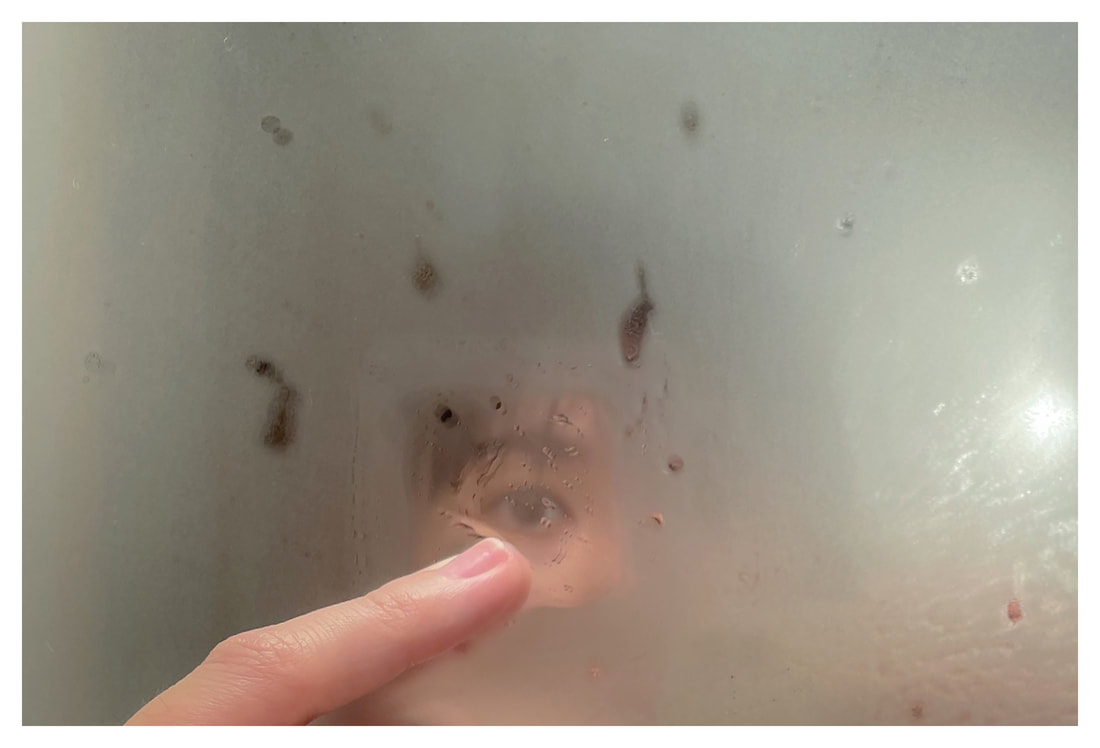
Fig. 8 Huang Xuan Daily foggy 2023
Photography|26×17.5 cm
Moreover, in Daily foggy (Fig. 8), Huang rubs her finger on the mirror fogged up with steam in the bathroom after taking a bath and looks into it as an experience during her stay in Kirishima. This is the meaning of the title, “daily foggy.” It is somewhat fanny to gaze at her as she focuses her attention with great seriousness on a commonplace scene in her daily life. However, the moment when the mirror, which had become completely unusable due to the steam, became slightly usable by the touch of her finger, is so poetic and beautiful as a picture. If we know that it is a metaphor for her whiteout experience in Kirishima where dense fog tends to occur, we can even read in it her deep affinity for this area [viii]。
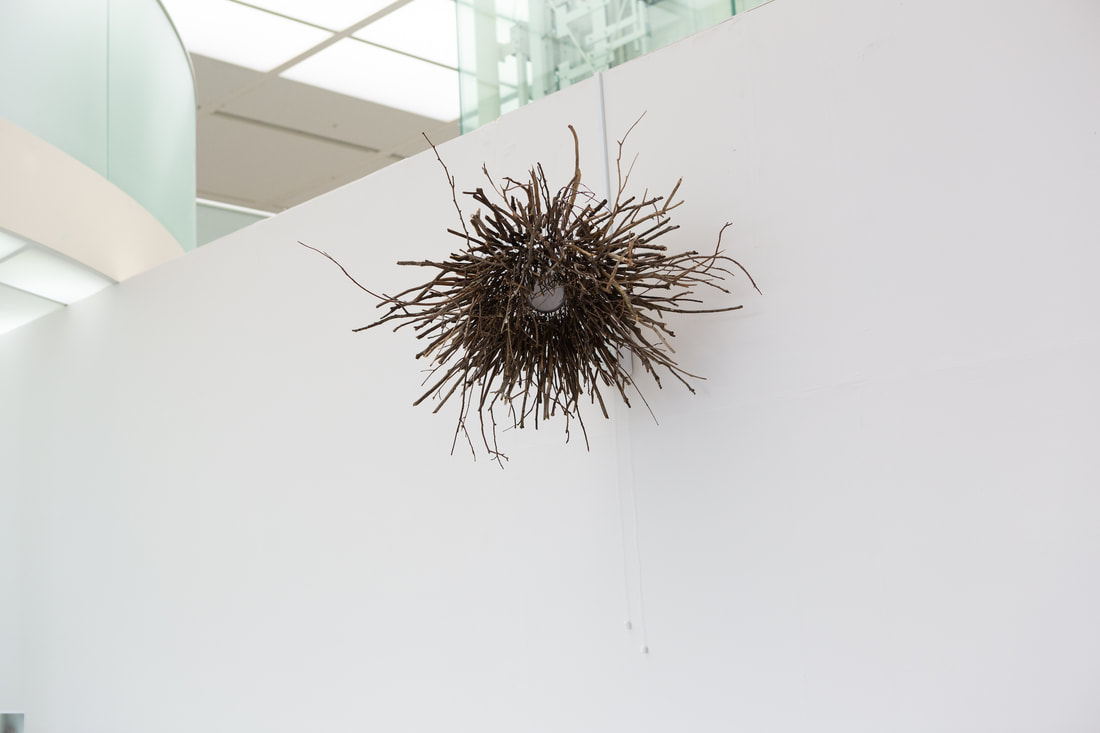
Fig. 9 Huang Xuan With the wind 2023
Electric fan, branches|87x60x80 cm
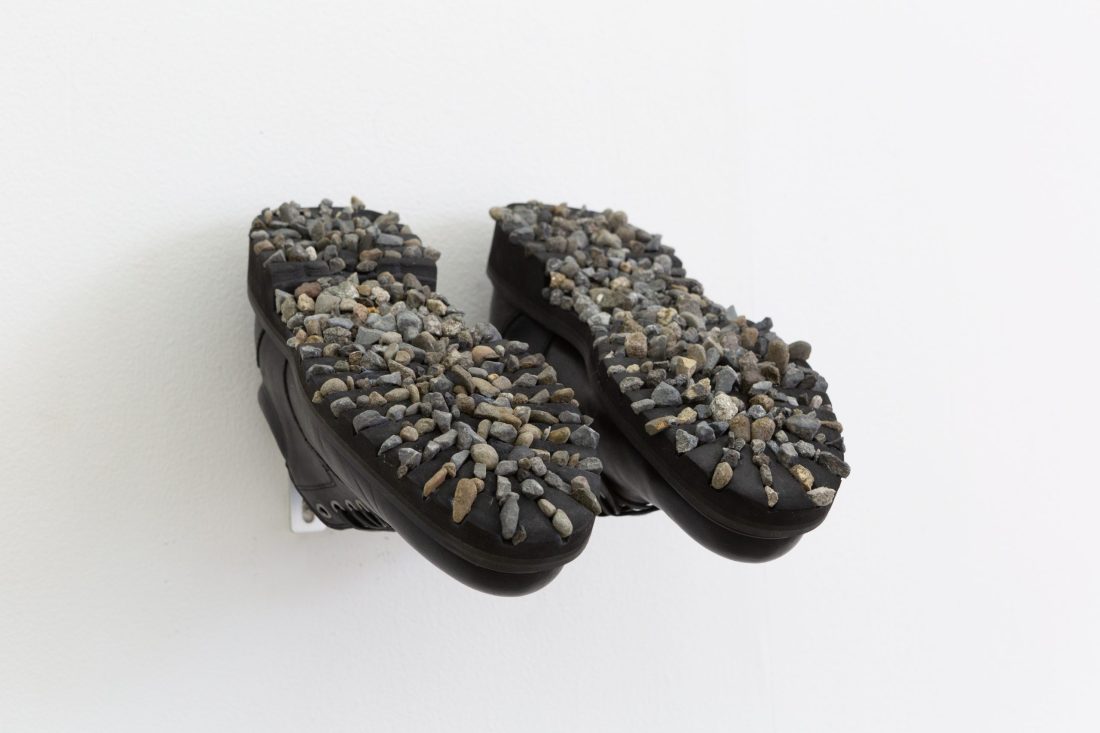
Fig. 10 Huang Xuan A small part of Kirishima 2023
Shoes, stone|27x31x18 cm
And in With the wind (Fig. 9), Huang stuffed a large number of tree branches that she collected from various places during her stay in Kirishima into the cover of an electric fan [ix]. Furthermore, in A small part of Kirishima (Fig. 10), Huang fills the grooves on the soles of leather shoes with a large number of pebbles collected from various places during her stay in Kirishima [x]. This is the meaning of the titles “With the wind” and “A small part of Kirishima.” Although one or two objects stuck in the gap of the cover of a fan or the sole of shoes is a small problem that everyone often experiences, it is a big trouble that objects get stuck in the gaps so much that it interferes with the original purpose of blowing air or walking. I can’t help but smile when I imagine her playing such childish pranks. However, the unprecedented appearance, in which the accumulation of everyday events is emphasized to an extraordinary level, is very poetic and beautiful as a picture. Furthermore, when we realize that the twigs, pebbles, and leather shoes there were all sourced from Kirishima, you can even detect her deep attachment to this region.
In this way, each of these Huang’s works combines humor with poetic lyricism. What both elements have in common is a method of bringing the extraordinary into the ordinary. Moreover, in order to convey this message easily to understand for anyone, we can see Huang’s distinctive creativity in the way she dares to use familiar objects and natural phenomena.
In fact, throwing stones into the sea, letting one’s hair fall to mimic a waterfall, holding up a cell phone on the street at night, brushing the steam off the mirror with one’s finger, attaching a twig in the fan cover, or putting a pebble in the bottom of leather shoes are actions that everyone has ever experienced at least once, or can easily do. That is why Huang’s works can be universally understood beyond borders, whether in Taiwan, Japan, or anywhere else.
◇ ◇ ◇
Then, what exactly is Huang trying to express as an artist through these works of art?
Of course, as is immediately apparent at first glance, Huang’s artworks have a service spirit of entertaining people. However, what is more important is that there is also intellectual speculation that goes beyond mere entertainment.
As mentioned above, Huang’s interest lies in various “boundaries,” especially in the “relationship between humans and nature.” By shifting the original context known to everyone and repeating seemingly meaningless acts, she attempts to make us aware of the relationship between ourselves and the world and the essence of each, which we have taken for granted, and to encourage us to seek a better way of living and a better way of being in the world at a deeper level. To this end, Huang brings anomalies such as excess, repetition, and futility into everyday life – by “stranding” things – in an attempt to renew our perception.
Actually, in all of the “In-House” series, the boundary between the natural and the artificial is at issue. In other words, it focuses on the naturalness within the human being. By combining a chair that cannot be sat on, a futon that cannot be slept on, or a lighting fixture that obstructs seeing, with further costumes, they would normally be useful become completely useless, and the normal relationship between objects and people is subverted, and the relationship between us and furniture, which we normally have no doubt about its usefulness, is relativized and brought to light. This raises the question of whether the natural nature of human beings is actually being suppressed in our artificially comfortable lives. That is, the hidden theme here is the question of whether humans can live more naturally and freely.
Additionally, Waves, The black Inukai Waterfall, Kurino Bridge +1, Daily Foggy, With the wind, and A small part of Kirishima, all concern the boundary between the natural world and the human world. In another expression, the focus is on humans in the midst of great nature. For example, the sea and a waterfall are topographical boundaries between the two world, road lights are the front line where urban areas and wild areas meet, a steam-fogged mirror with man’s finger touching it is a contact point between human and natural phenomena in dwelling, an electric fan is an artificial object that produce the natural phenomenon of wind inside house, and leather shoes are artificial objects made from nature that bring humans into contact with the earth. And, in Waves, a person responds to the movements of nature (coming waves = throwing stones). In The Black Inukai Waterfall and Kurino Bridge +1, a human imitates the form of nature (waterfall = hair, starry sky = road lights). Daily Foggy, With the wind, and A small part of Kirishima show that man-made objects have been penetrated by wildness and have become difficult to use (a fogged mirror, a fan coverd with twigs, and leather shoes full of pebbles). Through them, we can reflect on how human daily life is always included by nature. In short, the hidden theme here is to re-recognize the human position in the universe in a way that is different from everyday experience and science technology.
In general, the difference between “esprit” and “humor” is that even though both of them have in common that they make someone laugh, “esprit” is to make laugh by putting others down in a slightly mean way, whereas “humor” is to make laugh by lowering myself to others in a more friendly way. In this sense, through her works of art, Huang is supposed to be an artist who gently and cheerfully enliven people with the power of humor, and brings about a healthy and profound renewal of awareness. As the result, she may create an opportunity for people to remember and reconsider the importance of human nature and the greatness of mother nature for human beings.
Furthermore, during this exhibition period, Huang actually wore the “In-House” series for a total of 5 days of live performances. Huang is also a very unique and talented performance artist, so please be sure to watch the video of digest version of her performance, which is available on our museum’s official YouTube account.
Movie of performance (Digest)
Notes
[i] In this exhibition, Lai Chih-Sheng, who is Huang’s senior in the Taiwanese art world and the guest artist for the 3rd Asian Artist Invitation Project under the Kirishima Lobby Project, provided general support to Huang. For Huang and us, Lai helped to prepare exhibitions, took photos and videos, drove cars, and gave various advice. I would like to express my deep gratitude for his skillful and friendly cooperation.
[ii] “‘Around aground’ through futile and repetitive actions, the relationship between us and our surroundings in reality is revealed: for example, the pebbles that are thrown out and then washed back by the waves, the sofa that we fall down after trying to crouch down, the mattress that we push ourselves up and then get down again, and the shoes sole pattern that is stuck by small stones…… It is as if they are stranded in the midst of themselves and their surroundings. It is hoped that through the repetition and reversal of established rules, some kind of new response and thinking will be produced.” (Exhibition concept by the artist, September 12, 2023)。I would like to add that this may be useful for understanding Huang’s artwork: her father is a university professor of psychology.
[iii] In art history, Huang’s style can be said to be influenced by art unit Maywa Denki, who presented humorous industrial products as works of art, for which a special exhibition was held at our museum in 2006.
[iv] An explanation about “In-House” series by Huang herself dated September 27, 2023. (All quotes below have the same date.)
[v] “I stood on the pebbled shoreline and randomly picked up a pebble from the ground and threw it into the sea as the waves came in. I keep repeating this action until it gets dark. These stones are randomly picked by the waves and washed back to the shore, while I also throw them back to the sea by my random selection. I think I may be doing something similar with the waves, although the difference in power between us is huge, but this is my way of responding to the sea.” (by Huang)
[vi] “In the distance, the waterfall is flowing from the cliff. And the woman with her hair hanging down on a rock. Both of them are just a short moment in the world that are falling down.” (by Huang)
[vii] “I have always been fascinated by street lighting systems. I think that especially in such an environment surrounded by mountains and nature, the streetlight system is like the fingertips of human civilization, extending from the city to touch this place. It’s like the border between nature and civilization. There are few streetlights on the mountain highway after sunset, so I was particularly attracted to Kurino Bridge when it appeared at the fork in the highway. The streetlights are very tall, like man-made stars set here forever, and I wanted to use the only weak light from my hand to extend one more point of light at the end of the bridge.” (by Huang)
[viii] “In the Kirishima area, I often encountered fog at unexpected moments, which made the scenery of the mountains in front of me disappear. And when I came back home and took a hot shower, the mist left on the mirror for a short time and blocked my vision. I think this is one of the closest experiences to nature in daily life.” (by Huang)
[ix] “The forest filled with tall trees is the most vivid impression of Kirishima for me. Therefore, I picked up and collected many branches from the ground and stuffed them into the surface of electric fan. These branches fell from different trees and I gathered them together. When the wall fan filled with branches rotates, the wind blows out from between the branches like a wild animal looking around, which is how I feel about the vitality of the mountains and forests.” (by Huang)
[x] “I picked up small stones along the roadside in the Kirishima area and stuffed them into the soles of a pair of second-hand leather shoes I bought here. Through this way, and with the imagery and memories of this place – in the forest, on the edge of the volcano, on the winding mountain road, next to the supermarket – I wanted to extend the road to the soles of my feet, and take a small part of the scenery with me.” (by Huang)
(Fig. 8 is photographed by Huang Xuan, and the other all photos and movies photographed by Lai Chih-Sheng)
*Japanese version: 解説「黃 萱(ホアン・シェン)展――Around aground」鹿児島県霧島アートの森 秋丸知貴評
Kirishima Open-Air-Museum Official Website
Huang Xuan Website


